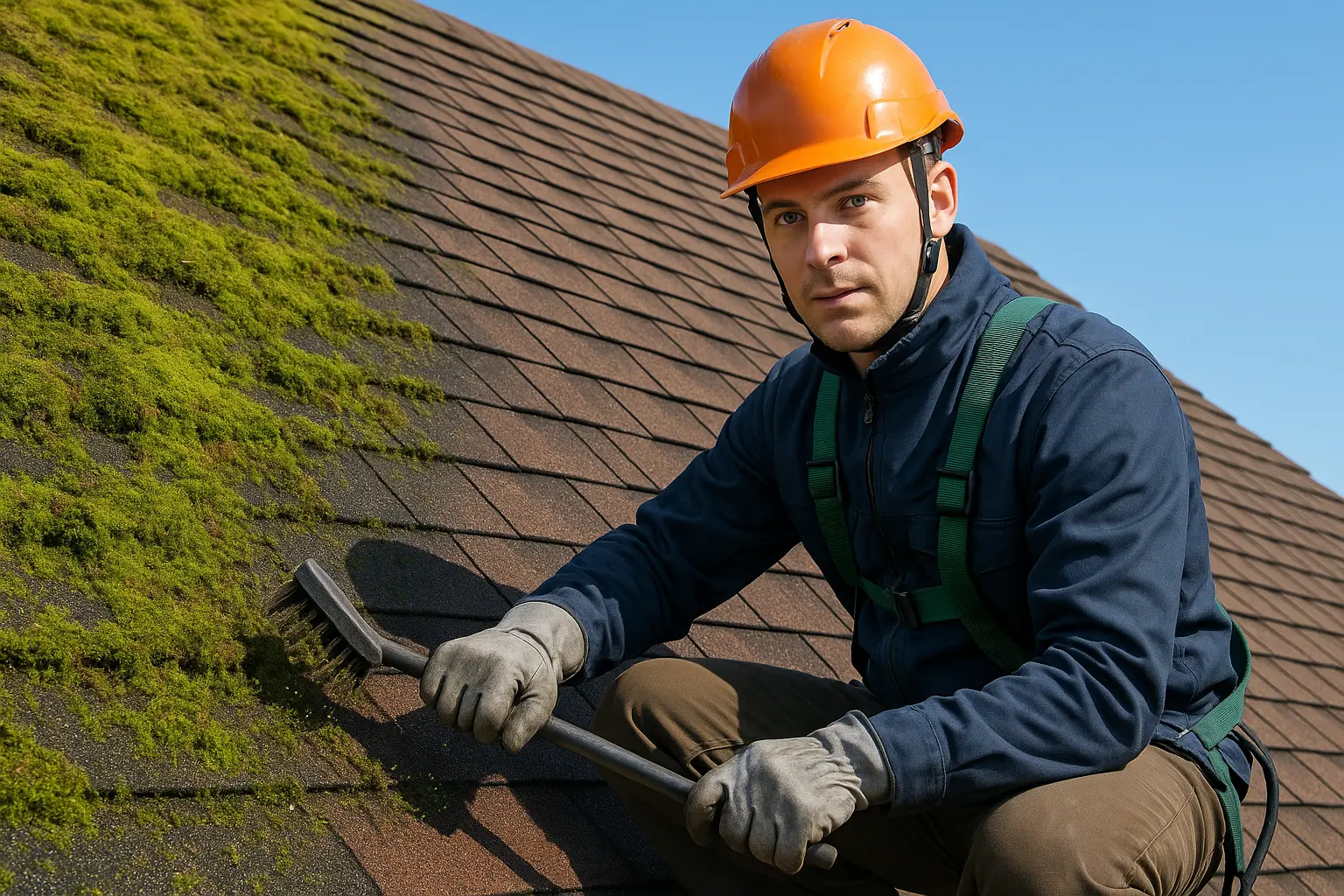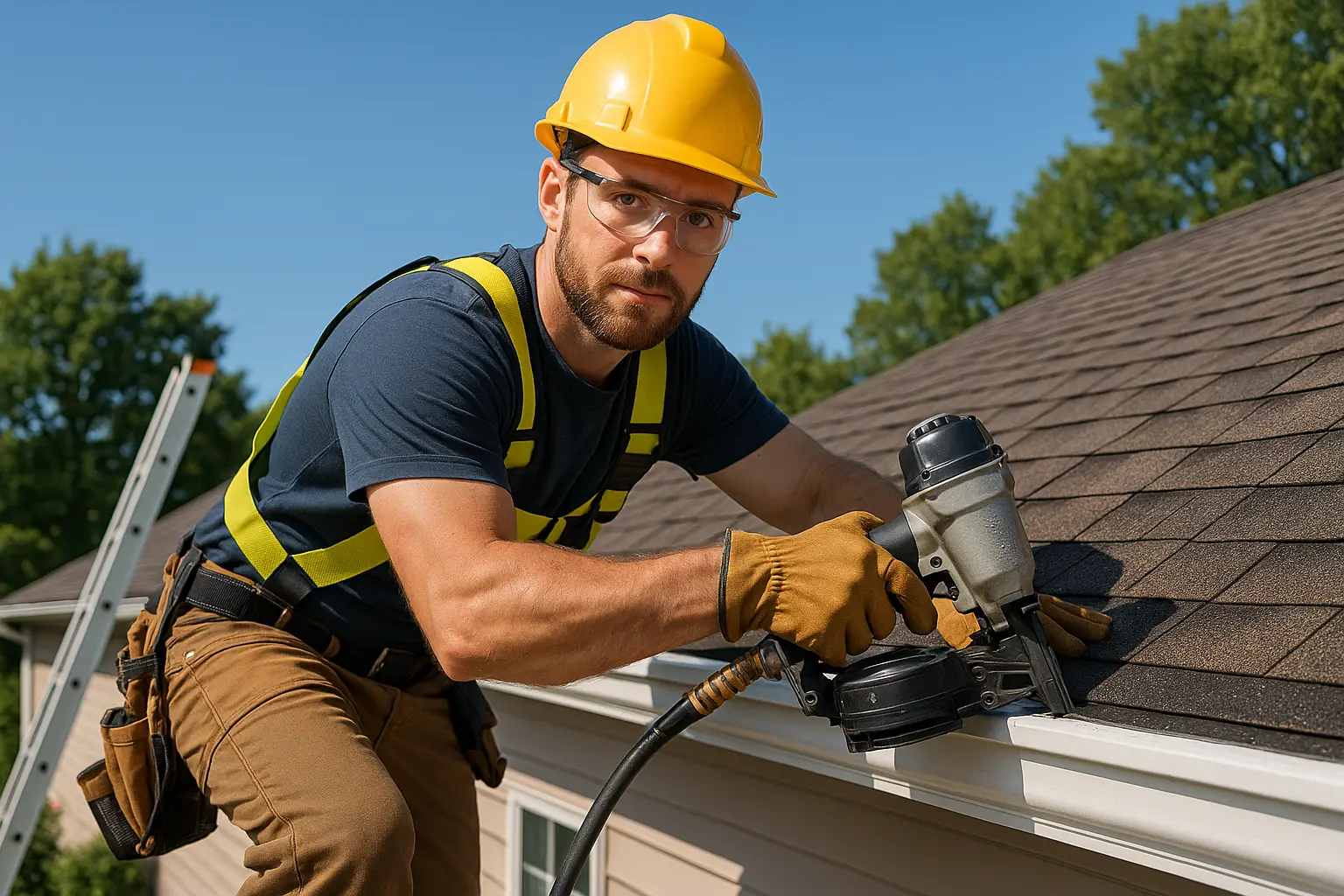Understanding the Problem of Water Overflow
Discovering a leak on your roof can be a distressing surprise, especially when the source is as avoidable as neglected gutters. Many homeowners miss how a small blockage can lead to a cascade of issues. When gutters aren’t cared for, water rolls over their sides, leading to water overflow that can undermine the stability of your entire house. The damage isn’t just visible from the outside; over time, persistent water overflow can cause expensive fixes, encourage mold growth, and shorten the life of your roof. Recognizing the root cause and the effects of inattention can protect your roof, your budget, and your peace of mind.
Picture a heavy downpour where water pours down the walls of your home because your gutters can’t channel it properly. In such moments, water overflow can wash away soil, undermine the foundation, and even weaken the wall structure. The good news is that by dealing with a blocked gutter right away, you can stop a small hassle from turning into a big problem that might result in a full-blown roof leak.
Often, a small commitment to regular upkeep can shield your home from water overflow damage brought on by accumulated moisture. Homeowners who schedule routine checks and cleanup can dodge thousands in repairs over the years. By keeping an eagle eye on your gutter system and acting on early signs of trouble, you build a strong defense against one of the most typical yet preventable issues in home maintenance.
Identifying the Cause
water overflow Insights and Its Effects
Gutters fill up with leaves, sticks, pine needles, and other natural debris, particularly during autumn’s falling season and winter’s cold spells. This natural clogging is even more pronounced in areas with plenty of mature trees, where heavy seasonal deposits quickly overwhelm the system. Dust, pollen, even nests from birds or small insects can add to the mix and worsen the blockage.
For example, think about a suburban home bordered by maple and oak trees. As autumn unfolds and colorful leaves drop, the gutters become quickly stuffed with organic bits. If these remain uncleaned, the debris cements over time and eventually forms a stubborn barrier that might stop water in its tracks. In severe situations, the accumulated material can act like a dam, causing complete water overflow that stresses not only the gutters but also the roof structure.
An additional culprit is the gradual build-up of sediment through repeated cycles of debris and overflow. This mix—organic material combined with fine dirt—creates a slippery layer that not only contributes to a clogged gutter but also hampers the efficiency of the downspouts. The end result is constant water overflow that can harm the roofline and the overall drainage system.
Early warning signs are pivotal. If you spot water leaking over the sides during a rainstorm, it signals that the system isn’t channeling water effectively. Similarly, sagging gutters indicate that the weight of the blockage is pulling them away from their supports.
Another red flag is when plants start growing inside your gutter system. The stagnant, debris-rich environment turns your gutters into an unexpected garden. Not only is this unappealing, but it also poses health risks, as moist conditions favor the emergence of mold and mildew. Indoors, stains on ceilings, upper walls, or unexpected damp areas in the attic can point to a rising water overflow problem causing a roof leak.
Modern solutions now include gutter systems fitted with sensors that detect blockages or hindered water flow. Regular checks, whether by yourself or a trusted professional, can catch these issues in time, stopping an easy-to-fix problem from turning into an expensive repair job.
Consequences for the Roof and Home Structure
When water fails to leave your property correctly because of a clogged gutter, its effects reach well beyond the immediate vicinity. Gutters are designed to pull rain away from your roof and foundation. When they back up, water settles on the roof, and relentless water overflow over time seeps under act as a silent assailant against your roofing materials.
This moisture can deteriorate the adhesive that secures your shingles and even warp underlying wood structures. Before long, the once-sturdy barrier of your roof weakens, permitting leaks that allow water to infiltrate your living environment. This interior wetness can damage ceilings, walls, or insulation, reducing your home’s energy efficiency and comfort.
If left unchecked, the constant pressure from trapped water can even alter the physical shape of your roof, demanding extensive repairs or a full roof replacement. The long-term consequences include lowering the market value of your property and prompting higher insurance premiums as water overflow issues lead to more frequent claims. It is absolutely critical to address these problems as soon as they develop to avoid a snowball effect of water overflow damage and roof leak complications.
Solutions for Clogged Gutters and Preventing Water Overflow
Routine Cleaning and Maintenance
A regular cleaning schedule is essential to prevent a clogged gutter that might eventually cause a damaging roof leak. Experts typically advise inspecting and cleaning your gutters at least twice yearly—once in the spring after winter deposits have melted away and once in the fall following the leaf drop. This regular routine ensures that organic debris, sediment, and any buildup are cleared, letting water flow freely and preventing dangerous water overflow.
The cleaning process involves scrubbing out leaves, twigs, and other debris. After clearing, flushing the gutters and downspouts with water clears out any residual blockages. This also gives you a chance to spot areas where the gutter might have rust or small cracks that, if fixed early, can save you from larger issues later on.
Many homeowners opt for special tools like gutter scoops or high-pressure hoses to make the task easier. Safety gear such as ladders, gloves, and eye protection is a must when doing the job yourself. In older neighborhoods or homes near dense tree cover, a fixed cleaning schedule becomes even more important to maintain proper water overflow control.
Installing Gutter Guards
Gutter guards have become a popular option for homeowners who want to reduce how often they need to clean up. These devices work as filters, letting water pass through while keeping unwanted debris out. Today’s market offers a variety of systems—from mesh screens and micro-mesh designs to foam inserts and gutter covers.
Take mesh screens for example; they’re especially helpful in wooded areas because they block even small pieces of debris from entering the gutter. Conversely, gutter brushes are a fine choice in areas where debris isn’t as heavy, meaning they require less frequent attention. When choosing a gutter guard, factors like local weather patterns, the type of surrounding trees, and your home’s design should guide your decision.
Gutter guards not only trim down the need for frequent cleaning but also help keep the entire system working as it should, thereby reducing the risk of water overflow. Several homeowners report that with these protections in place, incidents of roof leak and insurance claims drop significantly. Some units are even designed for DIY installation, while others benefit from a professional’s touch for a longer-lasting setup. All in all, investing in effective gutter guards is a smart move for reducing both headaches and repair costs.
Relying on Professional Gutter Services
If heights or time constraints stop you from performing regular maintenance, professional gutter services are a solid alternative. These experts have the know-how and specialized equipment to safely clean your gutters and inspect them for issues such as significant blockages or potential water overflow. Professional teams often offer seasonal maintenance contracts, easing the burden on homeowners while ensuring the system is regularly checked.
Skilled technicians can also spot related problems like roof leaks or foundation concerns caused by prolonged water overflow. Customer stories frequently mention that professionals not only clear debris but also fix minor damages, re-align sagging units, and replace faulty downspouts. Trusting in professional maintenance can give you the peace of mind you need, letting you concentrate on the more enjoyable sides of home living.
Preventing Future Issues Through Proactive Measures
Regular Inspections and Monitoring
In addition to routine cleaning, ongoing inspections are vital to catch potential setbacks early. A detailed look at your entire gutter system—including the mounting supports, downspouts, and the junction where the gutter meets the roof—can help detect issues before they worsen into major water overflow problems. Small signs like rust spots, sagging sections, or loose connections are all signals to act swiftly.
It’s best to inspect your gutters at least four times a year, especially after severe weather, heavy rain, or storms. A brief inspection might reveal issues that a quick glance could miss. Recording each check in a log helps you track recurring problems and plan more permanent fixes if necessary. Some contemporary systems even employ sensors that monitor water flow, alerting you in real time to any disruption in proper drainage.
This ongoing vigilance ensures that what might seem like a minor inconvenience now does not snowball into a major headache later—protecting you from the harm that water overflow and roof leak can inflict on your home.
Enhancing Overall Drainage Systems
Improving your home’s drainage network is another practical approach to prevent water overflow and its related problems. One effective method is installing downspout extensions, which channel water further away from the home’s foundation. When water is kept at a safe distance, the risk of seepage along walls and structural damage is much lower.
Picture diverting rainwater into a garden with a rainwater collection setup—the strategy not only eases water overflow but also gives you an eco-friendly way to use excess water. In regions that experience heavy rainfall, a well-designed drainage system can mean the difference between a sturdy home and one plagued by constant water damage.
Additional solutions might include adding French drains or a sump pump in spots prone to excessive moisture. These upgrades work hand in hand with the gutter system to create a robust barrier against prolonged water exposure. Particularly in older houses where original drainage may fall short of modern needs, such improvements can play a vital role in preserving your home’s integrity.
Seasonal Maintenance Routines
Adopting a maintenance plan that fits the seasonal changes is essential for keeping water overflow and roof leak issues at bay. Every season brings its own challenges—winter’s ice and snow might compact debris into stubborn clogs, while spring’s rapid melt and rains can overwhelm a system already strained by blocked gutters. In summer, increased heat and humidity may encourage moss growth that worsens a clogged gutter situation.
Preparing for seasonal variations means scheduling cleaning and inspections ahead of time. Prepping your gutters before winter can prevent ice dams from forming, which occurs when water overflow causes ice to build up under your shingles. After the heavy downpours of spring, another inspection is crucial for catching any residual clogs or damage before they worsen.
Establishing a set schedule for these seasonal checks—in addition to regular cleaning—helps maintain a reliable gutter system. Keeping detailed notes of maintenance work not only helps track wear and tear but also aids in identifying recurring issues that might call for a system redesign or added supports.
Conclusion and Next Steps
The challenge of a leaking roof due to blocked gutters calls for a comprehensive plan: grasp the underlying causes, adhere to routine cleaning, and put in place long-term prevention strategies. By keeping up with regular maintenance, investing in gutter guards, and seeking professional help when necessary, you protect your home from water overflow and avoid the severe damage linked to roof leak issues.
Maintaining a home is like watching a chain reaction—neglect one part and others can suffer. Every element, from the gutters to the drainage and seasonal checks, plays its part in shielding your home. When you choose to invest in preventive measures today, you aren’t just fixing a current problem; you’re also boosting the lasting value and safety of your property.
Modern tools, including sensor-based systems and advanced gutter guards, add a layer of efficiency and reassurance, making it easier to manage water overflow before it becomes a costly roof leak. Whether you choose to handle this care on your own or rely on professional services, the key is to act early and consistently.
Ultimately, tackling gutter blockages isn’t merely about quick fixes—it’s about securing a safe, durable, and visually appealing home for the long haul. Taking action now will pay off by avoiding extensive repairs down the road and keeping your home in tip-top condition.
Ready to secure your roof and combat water overflow? Now is the time to explore thorough gutter maintenance solutions. Embrace a proactive approach to protect your home against simple fixes that could spiral into major water overflow issues and roof leak problems. With the right strategies in place, you empower yourself to enjoy a safe, well-functioning, and beautiful home for years to come.





